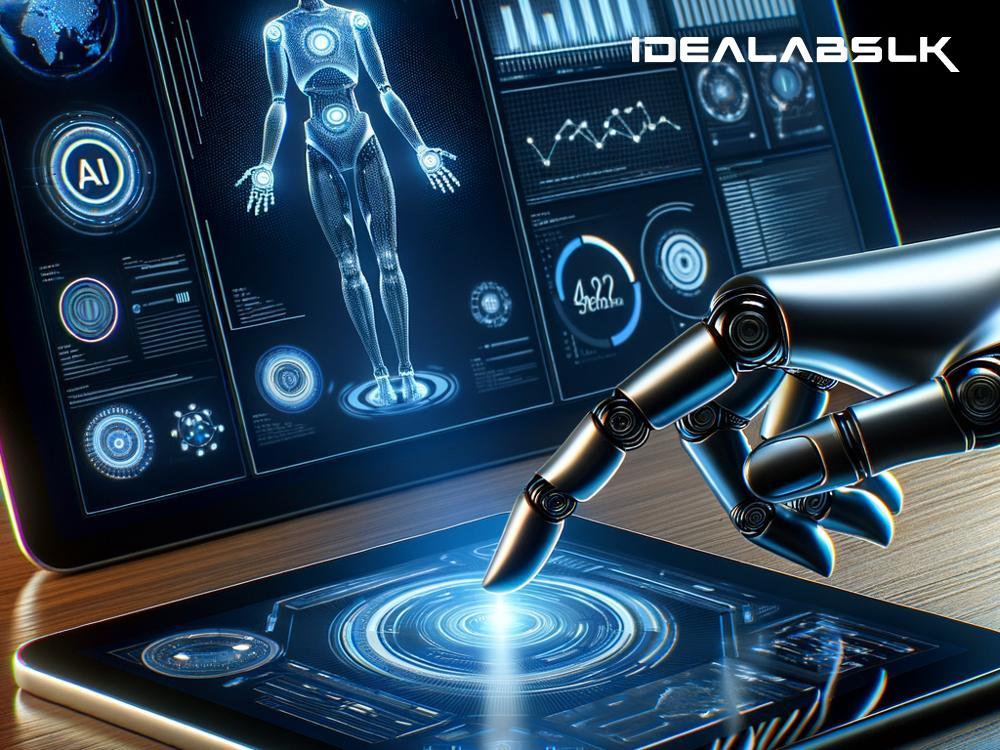AI in UI/UX: A Simplified Guide to Designing for Artificial Intelligence
In the rapidly evolving digital landscape, Artificial Intelligence (AI) has become a game-changer, significantly impacting User Interface (UI) and User Experience (UX) design. As technology becomes more sophisticated, the integration of AI in design not only makes interfaces smarter but also enhances the way users interact with digital products. Let's delve into how AI can be leveraged in UI/UX design, focusing on creating intuitive and user-friendly experiences.
Understanding AI in UI/UX
At its core, AI involves machines or systems being able to perform tasks that typically require human intelligence. This includes learning, reasoning, problem-solving, and understanding language. When applied to UI/UX, AI can analyze vast amounts of data, recognize patterns, and predict user behavior, enabling designers to create more personalized and efficient interfaces.
Why Incorporate AI in UI/UX Design?
The incorporation of AI into UI/UX design brings a plethora of benefits, including:
- Enhanced Personalization: AI can analyze user behavior and preferences to deliver personalized content and recommendations, making the user experience more relevant and engaging.
- Improved Efficiency: By automating routine tasks, AI allows users to accomplish their goals faster, significantly enhancing the overall user experience.
- Accessibility: AI-powered voice interfaces and chatbots make digital products more accessible to people with disabilities, ensuring a wider audience can benefit from these technologies.
How to Design for AI in UI/UX
-
Start with User Needs
Before implementing AI, it’s crucial to understand the users and their needs deeply. By identifying the tasks users struggle with or the information they seek, designers can determine where AI can add the most value. User research and testing are fundamental in this process, helping to align the AI capabilities with user expectations.
-
Keep It Simple
The magic of AI in UI/UX lies in its ability to simplify complex processes. Therefore, when designing AI-powered interfaces, keeping the design as simple and intuitive as possible is essential. Avoid overwhelming users with technical jargon or complicated instructions. The goal is to make the AI’s assistance seamless and almost invisible.
-
Focus on Transparency and Trust
Users need to feel in control and trust how AI is used within the product. Be transparent about what data the AI is using, how it’s being analyzed, and the benefits users will gain. Additionally, give users the option to opt-out or customize how AI interacts with their data. Building trust is paramount for a positive AI-enhanced UI/UX.
-
Design for Conversations
Voice interfaces and chatbots are common AI applications in UI/UX design. When designing these conversational interfaces, ensure the AI understands and generates natural language. The conversation should be smooth, with the AI guiding the user toward their objective effectively and efficiently. Personalized responses and the ability to understand context can significantly enhance the conversational experience.
-
Iterate Based on Feedback
AI in UI/UX is not a set-it-and-forget-it solution. It requires constant iteration based on user feedback and behavior. As users interact with the AI, valuable data is generated, which should be analyzed to identify areas for improvement. Continuous testing and refinement will ensure that the AI remains aligned with user needs and expectations.
-
Ensure Accessibility
Designing for AI in UI/UX means considering all user groups, including those with disabilities. Ensure that AI-powered features enhance accessibility, such as voice navigation for users with visual impairments or predictive text for users with motor impairments. Making your UI/UX design inclusive is not just a legal obligation in many cases but also extends the reach and usability of your product.
The Future is AI
As we look to the future, AI's role in UI/UX design is set to grow, transforming how we interact with digital products. By embracing AI, designers can unlock new possibilities for creating more personalized, efficient, and accessible user experiences. However, it’s important to approach AI integration thoughtfully, focusing on enhancing the user experience while maintaining transparency, privacy, and trust.
In essence, AI in UI/UX offers a powerful toolkit for designers, but its true value lies in how it’s applied to enrich the human experience. By starting with the user, keeping things simple, and constantly iterating based on feedback, designers can harness AI's potential to create engaging, intuitive, and impactful designs.

